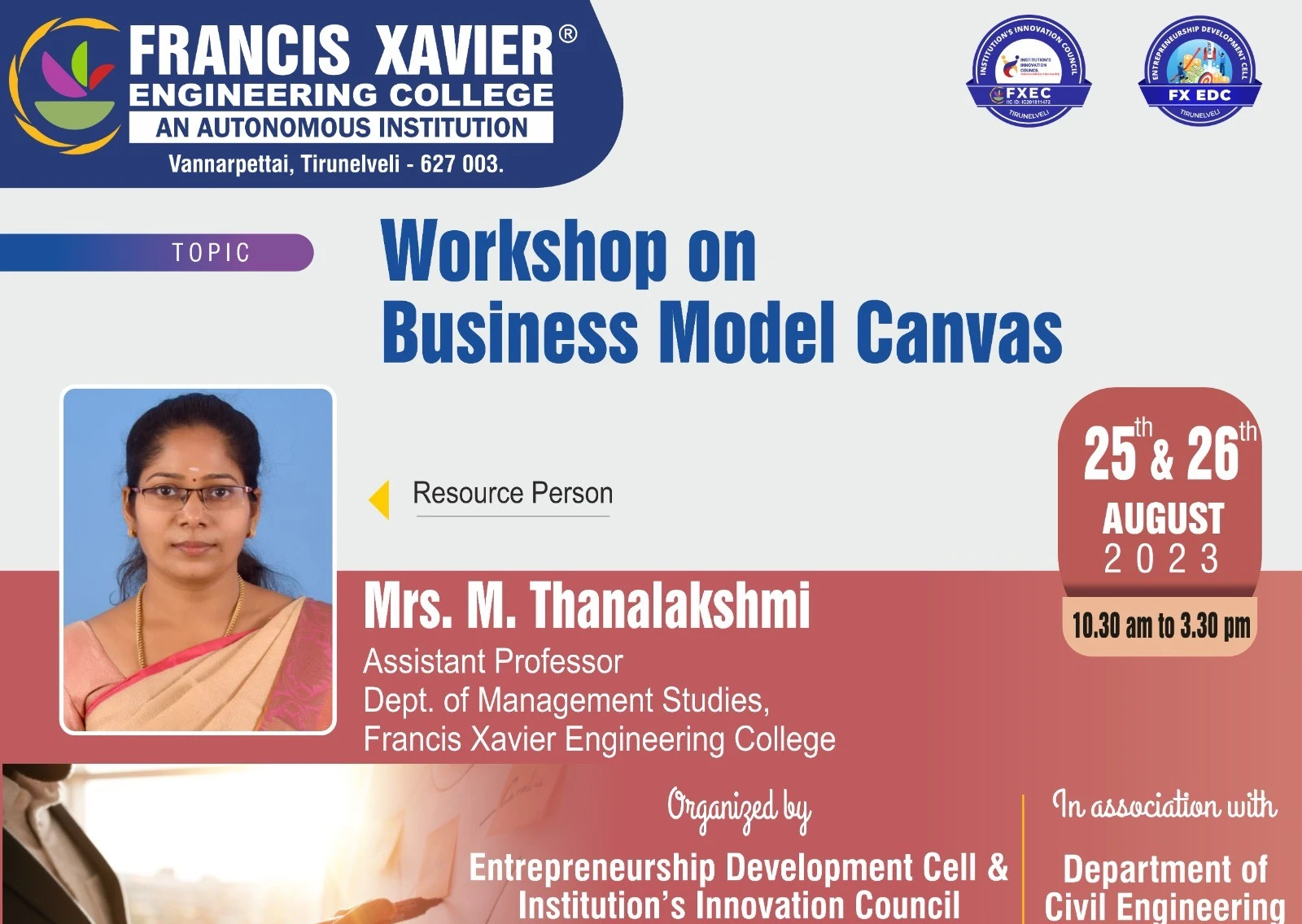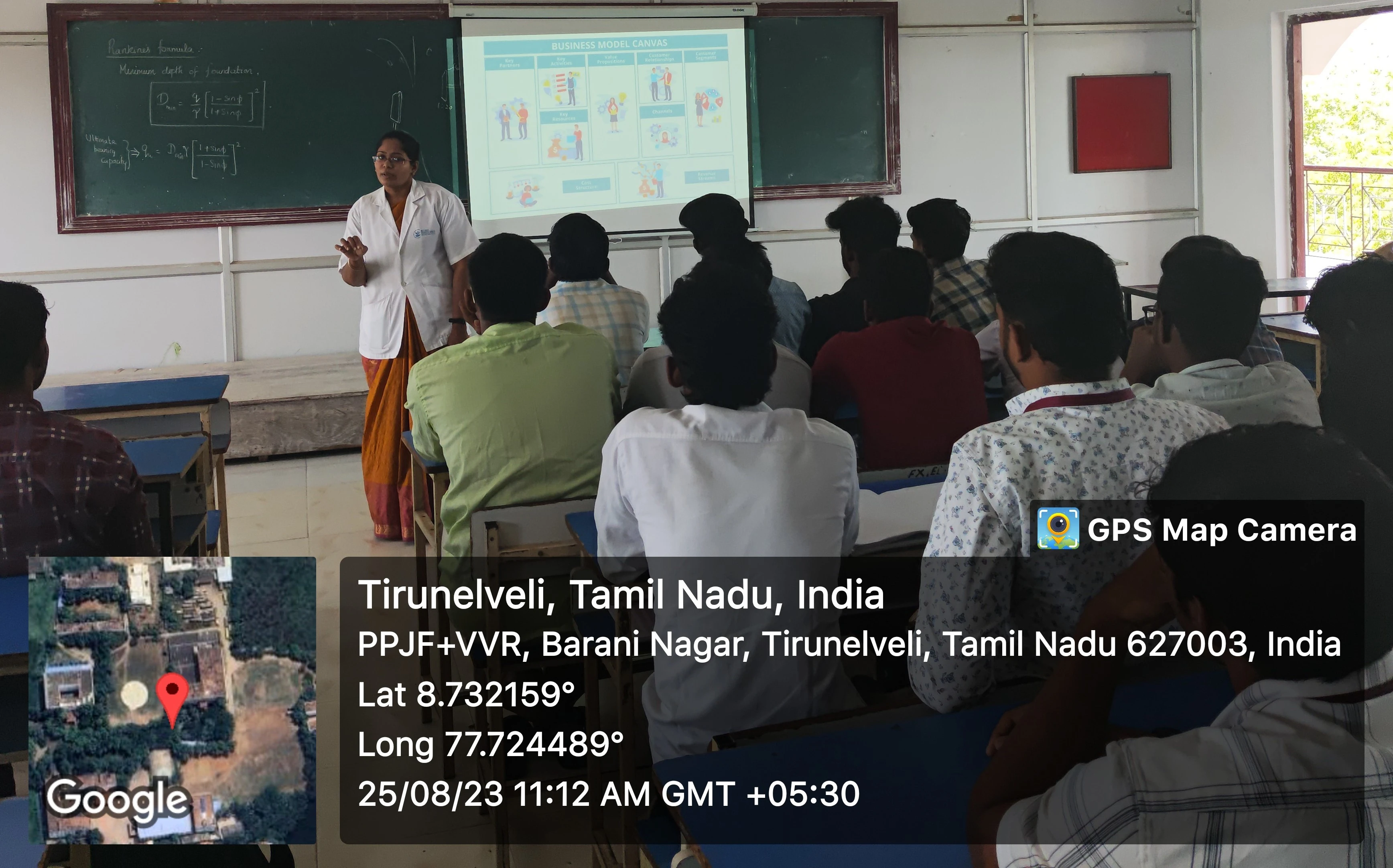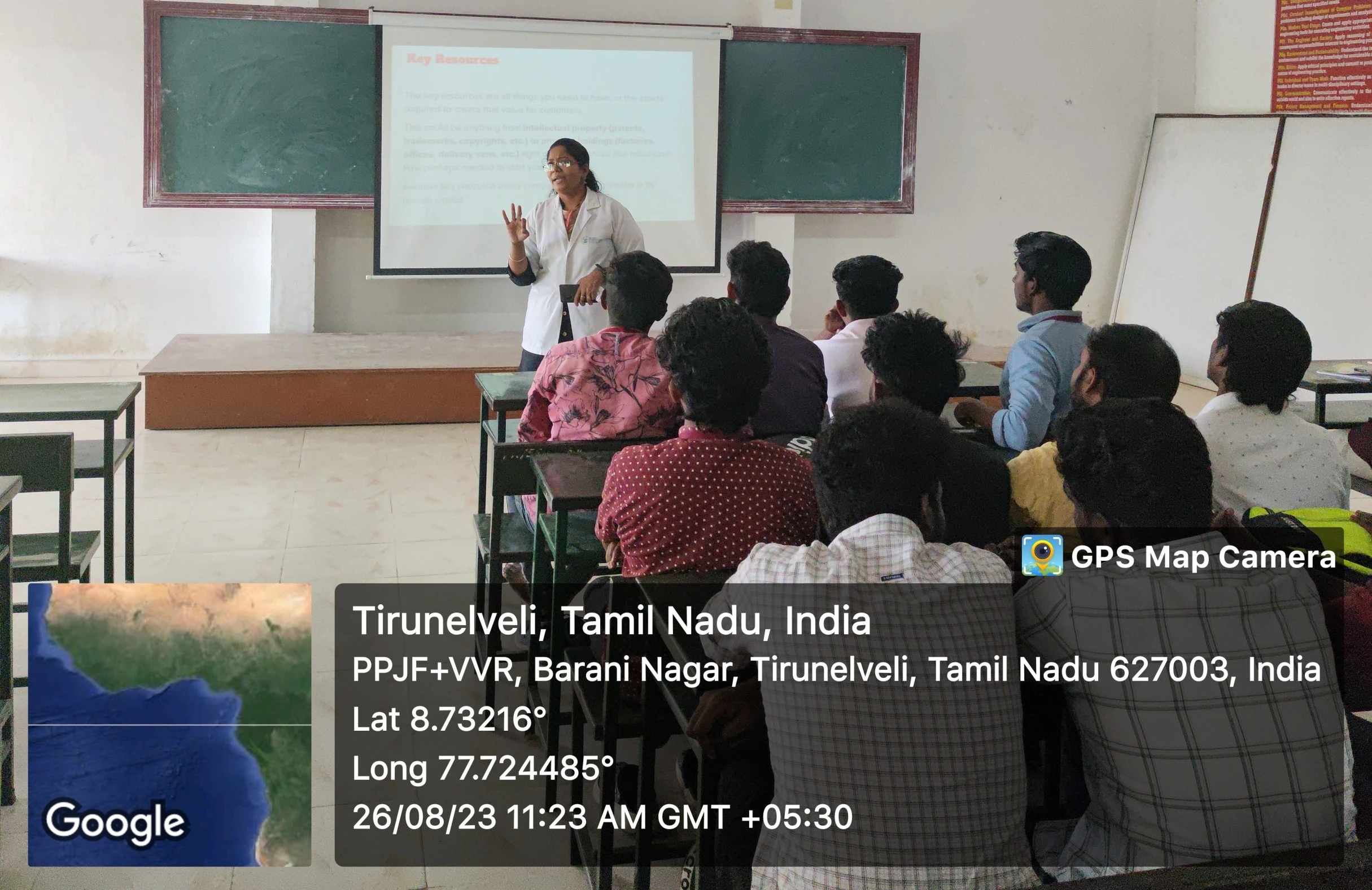
On 25.08.2023 & 26.8.23 a workshop on “Business Model Canvas” was organized by the Entrepreneurship Development Cell in association with the IIC for engineering graduates. The resource person for the session was Mrs.M. Thanalakshmi, Assistant Professor, Department of Management Studies, Francis Xavier Engineering College, Tirunelveli from 10.30 AM to 3.30 PM. 50 final year Civil Engineering students and 1 faculty attended the programme. The programme was coordinated by Mrs. P.Raja Priya, Assistant Professor, Department of Civil Engineering, Francis Xavier Engineering College.
On the first day the speaker addressed the gathering by introducing Alexander Osterwalder the creator of business model canvas who proposed the following as the key building blocks of business model canvas. Customer Segments, Value Propositions, Channels, Customer Relationships, Revenue Streams, Key Resources, Key Activities, Key Partners and Cost. The first four factors were detailed on the first day. The first block of the Business Canvas Model is about understanding who is the most important customer(s) we are delivering value to. The second phase is about figuring out the company’s value propositions, and importantly, the UVP (unique value proposition). The third block Channels are defined as the avenues through which the customer comes into contact with the business and becomes part of the sales cycle. Social media, networking were explained as some examples for channels. The fourth block customer relationship is about building nurture and growing relationships with the acquired customers. Amazon was given as an example for customer relationship. The guest speaker gave live examples to explain the concept in all the blocks. He asked all the participants to write each block for the proposed business.
On the second day the fifth phase Revenue Streams were explained as the way by which the business converts the value proposition or solution to the customer’s problem into financial gain. The sixth block of the BMC is related to key resources we need to have, or the assets required to create that value for customers. This could be anything from intellectual property (patents, trademarks, copyrights, etc.) to physical holdings (factories, offices, delivery vans, etc.) right down to finances (the initial cash flow perhaps needed to start your brand). Another key resource every company needs to consider is its human capital. The next step is to define the key activities i.e the areas we need to be good at to create value for your customers. Most modern business models now require brands to build out and work with various key partners to fully leverage their business model. This block was explained by giving KFC & Pepsi as an example. The final phase of the business model canvas, cost includes manufacturing costs, physical space, rent, payroll, but also areas such as marketing activities. The speaker also shared the business model canvas of apple NETFIX and Nike. The session ended with the feedback from the students.

